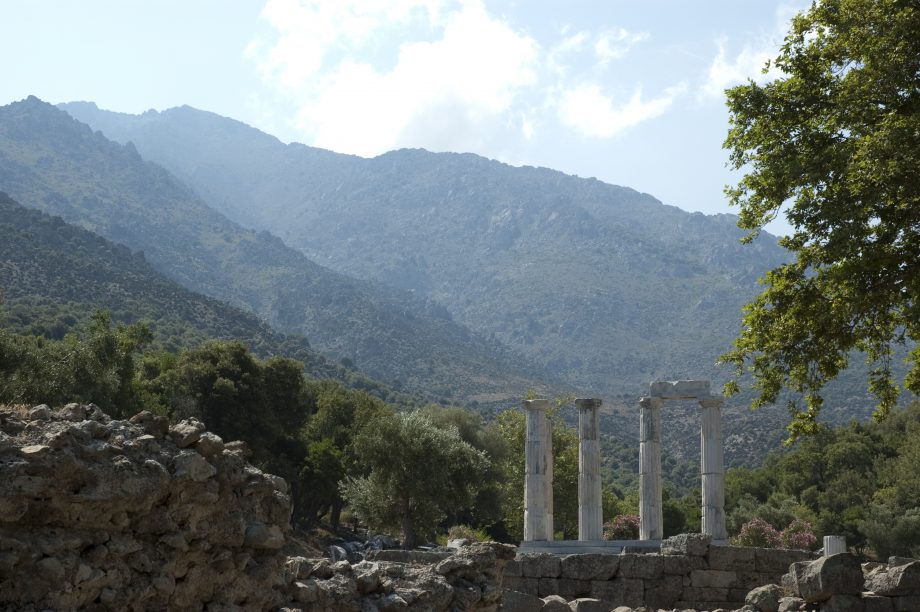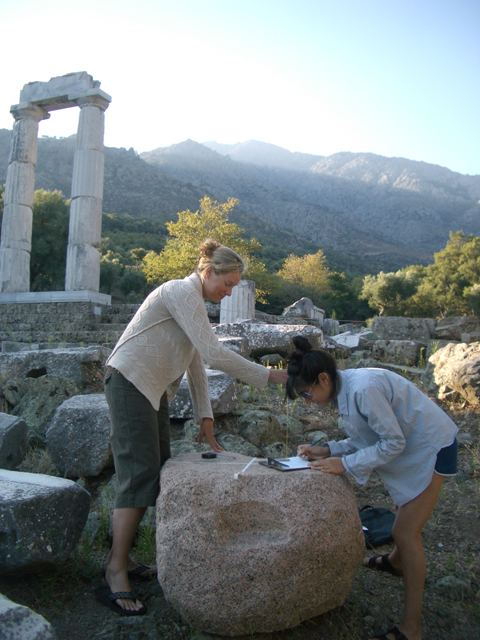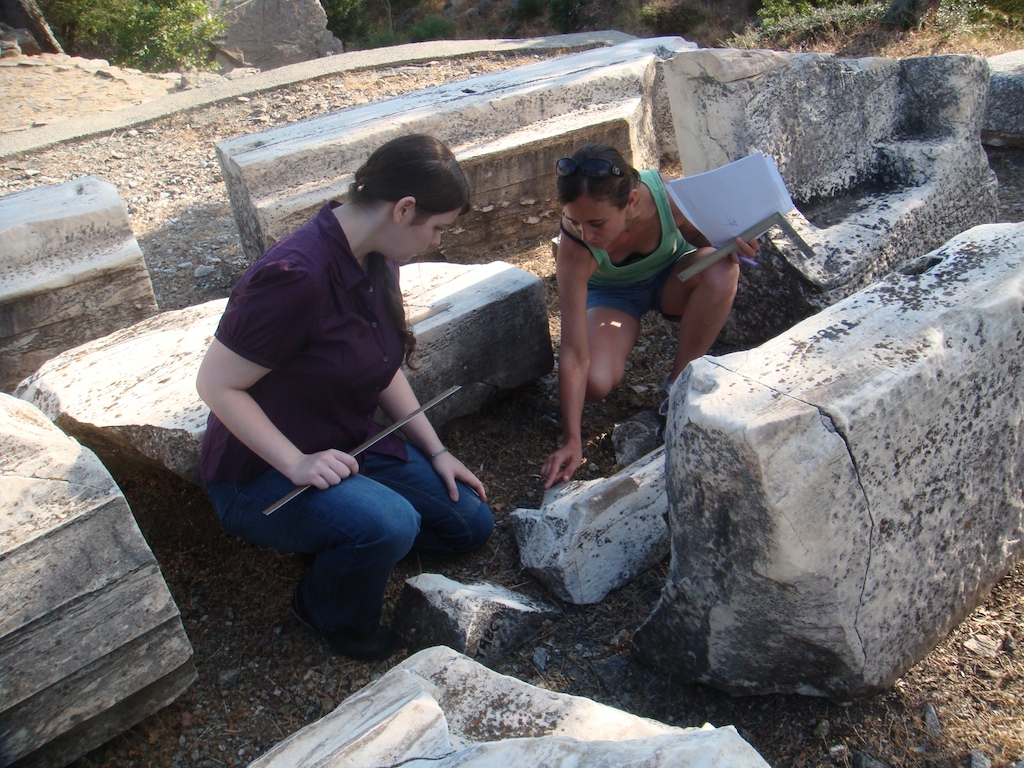 The small island of Samothrace, windswept beacon of the northern Aegean, rises from the sea to the lofty, mile-high summit of Mt. Fengari. A visual fulcrum between the plains of Troy to the east and the heights of holy Mount Athos to the west, Samothrace was the touchstone of sailors and the haunt of gods in antiquity. Even today, it has the unmistakable aura of sacred ground. From its craggy heights, Poseidon, the earth-shaker, watched the Trojan War. Here, the Argonauts sought initiation en route to Colchis and the Golden Fleece; they returned again on their way west. Odysseus stopped on his long journey home; and according to one version of events, Aeneas (descendent of the Samothracian, Dardanos) paused to collect the Penates on his way westward from Troy.
The small island of Samothrace, windswept beacon of the northern Aegean, rises from the sea to the lofty, mile-high summit of Mt. Fengari. A visual fulcrum between the plains of Troy to the east and the heights of holy Mount Athos to the west, Samothrace was the touchstone of sailors and the haunt of gods in antiquity. Even today, it has the unmistakable aura of sacred ground. From its craggy heights, Poseidon, the earth-shaker, watched the Trojan War. Here, the Argonauts sought initiation en route to Colchis and the Golden Fleece; they returned again on their way west. Odysseus stopped on his long journey home; and according to one version of events, Aeneas (descendent of the Samothracian, Dardanos) paused to collect the Penates on his way westward from Troy.
Here, events occurred that shaped the mythic and historic ancient world. The island’s legendary family was born of the Titan Elektra and the god Zeus. Of their three children, Dardanos gave birth to the Trojan people, Harmonia gave form to the personification of harmony, and Aetion taught humans the sacred rites of the mysteria. Here, the parents of Alexander the Great first met, and two centuries later, the last Macedonian king, Perseus, held his final stand against the Romans.
 In antiquity, the fame of Samothrace emanated from its cult of the Megaloi Theoi, Great Gods, whose rites of initiation, known as the mysteria, promised protection at sea and the opportunity to “become a better and more pious person in all ways.” (Diodorus) Their sanctuary, which was set in a cleft in the earth at the base of the mountain, framed by converging torrents, and facing toward the sea, feels spiritually integral to the deities of the earth, sky, and sea who played a fundamental role in the mysteria. The nature of the rites of initation was held in silent trust by the community of initiated. However, the transformative power of the rites is well attested by ancient authors, by the lists of initiates who came to the sanctuary, by the innovative architecture that sheltered the rituals, by the splendid dedications offered to the Gods, and by the humble but crucial detritus of cult—pottery and animal bones—that built up over centuries of use spanning from the 7th century BCE to the 4th century CE. Collectively, these physical and literary testimonia provide a key point of access to the spiritual, political, and cultural psyche of the ancient world.
In antiquity, the fame of Samothrace emanated from its cult of the Megaloi Theoi, Great Gods, whose rites of initiation, known as the mysteria, promised protection at sea and the opportunity to “become a better and more pious person in all ways.” (Diodorus) Their sanctuary, which was set in a cleft in the earth at the base of the mountain, framed by converging torrents, and facing toward the sea, feels spiritually integral to the deities of the earth, sky, and sea who played a fundamental role in the mysteria. The nature of the rites of initation was held in silent trust by the community of initiated. However, the transformative power of the rites is well attested by ancient authors, by the lists of initiates who came to the sanctuary, by the innovative architecture that sheltered the rituals, by the splendid dedications offered to the Gods, and by the humble but crucial detritus of cult—pottery and animal bones—that built up over centuries of use spanning from the 7th century BCE to the 4th century CE. Collectively, these physical and literary testimonia provide a key point of access to the spiritual, political, and cultural psyche of the ancient world.


 The aim of this website is to present the current research of the American team working in the Sanctuary of the Great Gods on Samothrace.
The aim of this website is to present the current research of the American team working in the Sanctuary of the Great Gods on Samothrace.